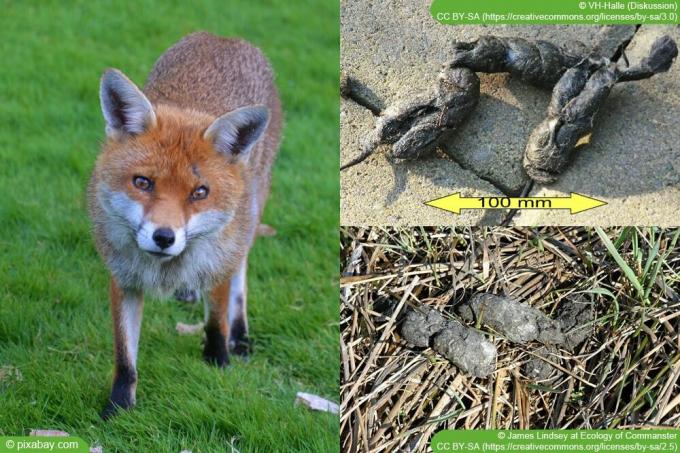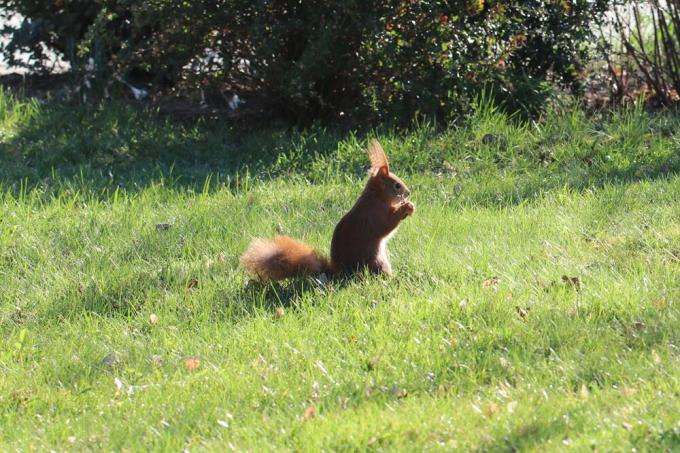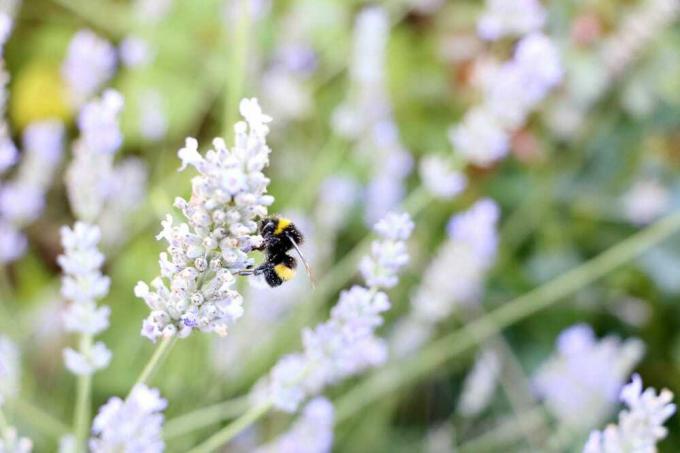

Table of contents
- hard distinction
- size and shape
- Color
- consistency and composition
- Odor
- localization
- Remove fox droppings properly
- Danger from fox droppings
Recognizing fox droppings and removing them properly is important because fox droppings can pose a health risk due to a pathogen. It can be distinguished by the following features.
hard distinction
If animal droppings are found in the garden, the neighbor's cat is quickly suspected. On properties without a fence, it could also be the dog next door. But also a marten, badger or raccoon. It is not easy, especially for laypeople, to distinguish fox droppings from the droppings of other animals. However, since the excrements of foxes can be dangerous for humans and pets due to a parasite, great care should be taken when removing them.
size and shape
Fox droppings are typically two centimeters thick and three to eight centimeters long. The individual pieces of feces are each pointed at the end.
Color
Grey, dark brown or black are possible colors. However, the color depends to a large extent on what the fox's diet consisted of. However, the color is usually very dark.
consistency and composition
Fox droppings are usually solid and comparatively dry. Which components of the food can still be recognized depends on what the fox was able to get hold of. Insects, fur hair and seeds are not uncommon, but do not have to be present.
Odor
However, the smell of the fox droppings is usually not strong and also depends on what the animal has eaten. From a distance, however, it is usually not noticeable. Only when the feces are fresh and when removed directly can they be felt.
localization
One of the clearest characteristics that can be used to identify fox droppings is the location of the droppings. In contrast to cats and other animals, foxes do not cover their droppings with earth and bury them in sand, but rather use them as markers.
It is also not uncommon for the feces to be found in raised spots. For example on:
- tufts of grass
- ground covers
- stones
- lawn edges
- low but prominent objects
- stair steps

James Lindsey at Ecology of Commanster, Vulpes.vulpes.dung, edited by Hausgarten, CC BY-SA 3.0.
The foxes can use it not only to mark their fixed territory, but also to show where they have found food, among other things. Accessible compost heaps with leftovers, open or damaged garbage cans and food left outside should therefore be avoided.
Tip:
If animal droppings are found in the garden again and again, setting up a wildlife camera can determine which animal species has left them behind.
Remove fox droppings properly
In principle, removing fox droppings in a way that does not pose a threat to humans or pets is very simple. Dog owners are already familiar with the principle of removing their four-legged friend's feces.
- A plastic bag - for example a special poo bag for dogs, or a cling bag - is put over the hand.
- The bag should be checked for any weaknesses, holes and tears. Only when it is completely sealed and intact can it be removed to remove the feces.
- With the hand protected in this way, the droppings are picked up and the bag is put over it. Afterwards it only has to be knotted and disposed of safely with the household waste.
If you want additional protection, you can also wear latex gloves to avoid skin contact. In addition, when collecting with the bag, the hands should be washed well and disinfected afterwards. Care should be taken not to directly grab your face after removal.
Notice to dog owners
Since dogs sometimes eat fox droppings or roll around in it, it makes sense in your own garden or when running free to keep an eye on the dog and condition an abort command to discourage such behavior.
Danger from fox droppings
Fox dung may contain the so-called fox tapeworm, or more specifically, the parasite's eggs. These are extremely persistent and can result in alveolar echinococcosis being produced. The medical term is popularly called fox tapeworm disease. It is a serious and insidious disease that can sometimes break out after five or even 15 years. In many cases it is now treatable, but not curable. A complete cure is only possible for a few affected people.

Because of this danger, animal droppings in the garden should always be handled with care and appropriate measures taken to remove them. Because even experienced hunters and foresters cannot be completely sure that it is fox droppings or the excrement of another animal based on the following characteristics.
 Home editorial office
Home editorial office
Learn more about beneficial insects

What does hedgehog droppings look like? | Recognize hedgehog droppings
Hedgehogs are not only very cute, but also useful animals. a. devour the unpopular slugs in the garden. They feel particularly comfortable in natural gardens. Their legacies, which can even be hazardous to health, are less pleasant.

What does raccoon droppings look like? How to recognize him
Raccoons are purely outwardly, quite cute contemporaries. However, this does not hide the fact that these are wild animals that can cause great damage in the garden and on the house. This masked intruder can pose a danger to residents and pets.

Recognizing squirrel droppings: typical appearance with picture
Gardens provide an oasis for many wild animals to forage there. The animal visitors leave clearly visible traces in the form of droppings. If you take a closer look at the pieces of excrement, you can see which animal was the cause based on certain clues.

drive away wild bees | What to do against wild bees in the garden?
If you want to drive away and get rid of wild bees, you should use natural and gentle means. Because the insects are useful in the garden and generally important for the environment. In addition, they are rarely threatening. We reveal how the fight works.

List: these ant species exist in Germany - ants
Ants can be found everywhere, whether in the forest, on a roadside, in the garden or even on the terrace and in the house if there is something interesting for the animals. But not all ants are the same, there are over 13,000 species of ants worldwide, 200 of them in Europe alone.

Build a bumblebee castle: Instructions | The ideal location to set up
Like bees, bumblebees make an important contribution to the pollination of plants. Your big advantage: you start flying in the spring long before the bees. How to build an ideal nesting place (bumblebee castle) for the endangered animals can be found here.



